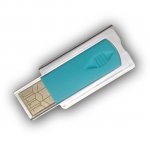usb flash autorun
AutoRun and the companion feature AutoPlay are components of the Microsoft Windows operating system that dictate what actions the system takes when a drive is mounted.
AutoRun was introduced in Windows 95 to ease application installation for non-technical users and reduce the cost of software support calls. When an appropriately configured CD-ROM is inserted into a CD-ROM drive, Windows detects the arrival and checks the contents for a special file containing a set of instructions. For a commercial application, these instructions normally initiate installation of the software from the CD-ROM. To maximise the likelihood of installation success, AutoRun also acts when the drive is accessed ("double-clicked") in Windows Explorer (or "My Computer").
Until the introduction of Windows XP, the terms AutoRun and AutoPlay were used interchangeably, developers often using the former term and end users the latter. This tendency is reflected in Windows Policy settings named AutoPlay that change Windows Registry entries named AutoRun, and in the autorun.inf file which causes "AutoPlay" to be added to drives’ context menus. The terminology was of little importance until the arrival of Windows XP and its addition of a new feature to assist users in selecting appropriate actions when new media and devices were detected. This new feature was called AutoPlay and a differentiation between the two terms was created.
AutoRun was introduced in Windows 95 to ease application installation for non-technical users and reduce the cost of software support calls. When an appropriately configured CD-ROM is inserted into a CD-ROM drive, Windows detects the arrival and checks the contents for a special file containing a set of instructions. For a commercial application, these instructions normally initiate installation of the software from the CD-ROM. To maximise the likelihood of installation success, AutoRun also acts when the drive is accessed ("double-clicked") in Windows Explorer (or "My Computer").
Until the introduction of Windows XP, the terms AutoRun and AutoPlay were used interchangeably, developers often using the former term and end users the latter. This tendency is reflected in Windows Policy settings named AutoPlay that change Windows Registry entries named AutoRun, and in the autorun.inf file which causes "AutoPlay" to be added to drives’ context menus. The terminology was of little importance until the arrival of Windows XP and its addition of a new feature to assist users in selecting appropriate actions when new media and devices were detected. This new feature was called AutoPlay and a differentiation between the two terms was created.
For more information, please visit this articles web page.
This article was published on Wednesday 23 September, 2009.
Current Reviews: 0
| Products related to this article: |
|
Categories


